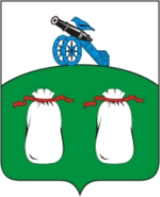
Bely, Russia
Encyclopedia

Belsky District
Belsky District is an administrative and municipal district , one of the 36 in Tver Oblast, Russia....
of Tver Oblast
Tver Oblast
Tver Oblast is a federal subject of Russia . Its administrative center is the city of Tver. From 1935 to 1990, it was named Kalinin Oblast after Mikhail Kalinin. Population: Tver Oblast is an area of lakes, such as Seliger and Brosno...
, Russia
Russia
Russia or , officially known as both Russia and the Russian Federation , is a country in northern Eurasia. It is a federal semi-presidential republic, comprising 83 federal subjects...
, situated on the Obsha River
Obsha River
Obsha is a river in Smolensk and Tver Oblasts, Russia, a tributary of the Mezha . The town of Bely is located on the Obsha....
, about halfway between Smolensk
Smolensk
Smolensk is a city and the administrative center of Smolensk Oblast, Russia, located on the Dnieper River. Situated west-southwest of Moscow, this walled city was destroyed several times throughout its long history since it was on the invasion routes of both Napoleon and Hitler. Today, Smolensk...
(to the southwest), Toropets
Toropets
Toropets is a town and the administrative center of Toropetsky District of Tver Oblast, Russia, located where the Toropa River enters Lake Solomeno. Population: -History:...
(to the north), and Rzhev
Rzhev
Rzhev is a town in Tver Oblast, Russia, southwest of Staritsa and from Tver, on the highway and railway connecting Moscow and Riga. It is the uppermost town situated on the Volga River. Population:...
(to the northeast). Population: 6,900 (1897).
Bely means "white" in Russian, although it is moot to guess why the epithet came to be applied to this town. It was first noticed in 1359 as a fort in the principality of Smolensk
Smolensk
Smolensk is a city and the administrative center of Smolensk Oblast, Russia, located on the Dnieper River. Situated west-southwest of Moscow, this walled city was destroyed several times throughout its long history since it was on the invasion routes of both Napoleon and Hitler. Today, Smolensk...
, passing to Lithuania
Lithuania
Lithuania , officially the Republic of Lithuania is a country in Northern Europe, the biggest of the three Baltic states. It is situated along the southeastern shore of the Baltic Sea, whereby to the west lie Sweden and Denmark...
by the end of the century. In the 15th century, it became a seat of the Belsky
Belsky
The Belsky or Belski family was a princely family of Gediminid origin in the Grand Duchy of Lithuania. It later deflected to the Grand Duchy of Moscow and played a key role during the regency of Ivan IV of Russia. The family started with Ivan Vladimirovich, son of Vladimir Olgerdovich and grandson...
branch of the ruling House of Gediminas
Gediminids
The Gediminids were a dynasty of monarchs of Grand Duchy of Lithuania that reigned from the 14th to the 16th century. One branch of this dynasty, known as the Jagiellons, reigned also in Kingdom of Poland, Kingdom of Hungary and Kingdom of Bohemia...
. The town was overrun by Muscovy in 1503. Three years later, they built a formidable castle, which the Lithuanians laid a siege to in 1508. The town was again subordinated to the Polish-Lithuanian Commonwealth
Polish-Lithuanian Commonwealth
The Polish–Lithuanian Commonwealth was a dualistic state of Poland and Lithuania ruled by a common monarch. It was the largest and one of the most populous countries of 16th- and 17th‑century Europe with some and a multi-ethnic population of 11 million at its peak in the early 17th century...
between 1618 and 1654.

